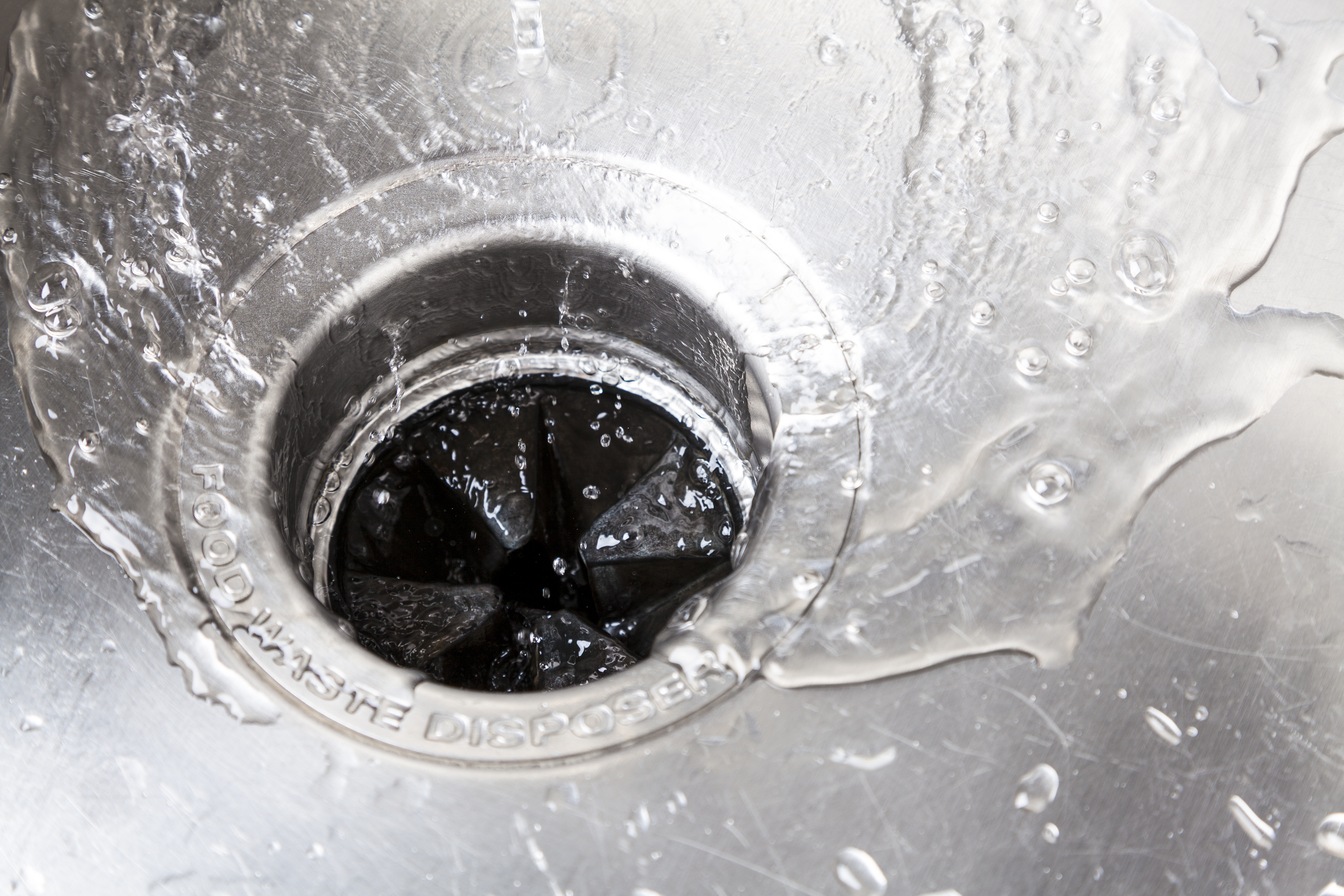A waste disposal fits into the waste plug area on your sink
The average UK household throws away £470 worth of food every year – totalling 7.3 million tonnes – of which around 40 percent ends up in landfills, emitting dangerous greenhouse gases as it rots. Installing a food waste disposer in your home will divert your food waste from landfill sites by sending it to a wastewater treatment plant where it can be converted into biogas. A disposer has a place, even if you make garden compost, as it will deal with leftover meat, fish, rice, bread, pasta, confectionery, and any other foods that can’t be composted. Some local councils even offer a grant if a disposer is installed – ask at your council offices. Using a disposer can upset the bio balance in a septic tank – you may need to use enzyme additives – check with a tank supplier.

What is a food waste disposer
A food waste disposer is a compact, circular, and highly powerful unit that sits discreetly in the cupboard or space underneath your kitchen sink and is connected to the waste; it takes food waste out of your hands, by grinding it into tiny particles that will flush into your wastewater system just like anything else.
A food waste disposer will revolutionise your kitchen – no more unsightly and smelly waste, no more food residue splattered across the bin lid, and no temptation for pets to conduct a bin raid in search of goodies.
Because the food waste disposer connects to your plughole at one end and your wastewater pipe at the other, the water and other liquid waste that would usually go down the sink will pass through it undisturbed. All it needs is a power supply and a waste water pipe to connect to. Turn on your tap, switch on the unit and scrape your food waste down the specially modified plughole. As food passes into the main chamber a specially designed grinding mechanism reduces it to small particles.
A waste disposer can be either batch feed or continuous feed. Batch feed waste disposers are less popular than continuous units, although they are still an effective way to dispose of unwanted food waste. While continuous feed models start up with the simple press of an air switch, batch feed models require additional steps to work. The downside to a batch feed model is that you must place the waste inside the garbage disposal before turning it on. Therefore, if you have a large volume of waste food to dispose of, it will need to be done in batches, rather than continuously, and you will have to turn the machine on and off.

Why should I get a food waste disposer?
A waste disposer is much more than a gadget. It keeps flies and unpleasant smells away from your kitchen – and helps the environment When food is redirected to the same treatment plants that your wastewater goes to, it can yield valuable biogas, as well as soil nutrients that can be used in fertiliser for the agricultural industry.
What can I put into a food waste disposer?
You might be surprised by just how much you can throw at a food waste disposer – there’s very little food, hard or soft, that its mechanism can’t handle. Even hard items such as bones from chicken, other meats and fish, prawn shells, eggshells, and fruit pips and stones will grind down easily.
Although you can throw most food waste down your waste disposal, it can still get clogged if a certain food is thrown down the unit. To avoid blocked waste disposal, you should make sure you don’t throw away large amounts of:
- Fatty foods, such as butter and cream sauces.
- Starchy foods, such as beans
- Fibrous foods, such as banana peels and potato skin.
- Hard materials, such as bones.
- Oyster and mussel shells
How you run your waste disposal is important too. You should make sure that you turn on cold water as you let your waste disposal run. While it runs, throw away small amounts of food, and remember to also let the water flow for a few seconds after you’ve finished
They need to be regularly maintained
Food particles can get stuck or linger even if a waste disposal is used correctly. These food particles will then decay and begin to smell. Therefore, you will need to clean it at least once a week.
They can clog and break
Waste disposals can get clogged if you accidentally drop the wrong type of food or if you throw away food in large amounts. If there’s too much food, your waste disposal can also end up breaking.
Accidentally dropping a piece of cutlery into the disposer is not the end of the world. All disposers come with clear instructions on how to remove foreign bodies safely.

New Waste Disposers from CDA
CDA has added two new waste disposers to its comprehensive collection of kitchen equipment. Both models are continuous feed for fast, efficient operation and fit neatly beneath the sink. The disposers are backed by CDA’s comprehensive two-year parts and labour and five-year parts guarantee.
